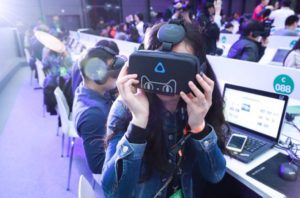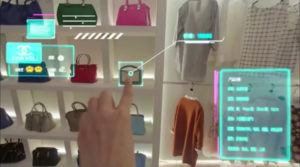Alibaba’s VR Shopping: Fad or Future?

A Tale of My Personal Virtual Shopping Experiences
It was only two days before the school’s graduation ball. But I still hadn’t picked my dress for the night yet. What a headache!
I tried on 20 different dresses at the Macy’s flagship store in Manhattan. Not my style at all. A second later, I found myself in a fashion boutique in Paris. “There it is!’’ I nodded. The dress for the most important gala in my school year popped right in front of me. I nodded again. It’s checked out and shipped right away.
In fact, I didn’t leave my dorm in Harvard at all. All I did was putting on a virtual reality headset.

This is no longer science fiction. Alibaba Group, Asia’s biggest e-commerce company, dived into virtual reality later last year. Its debut Buy+ technology was the latest and the largest attempt in the world’s retail industry that blended the online and offline shopping together. It allows customers to browse 3D images of products and make real-time payment in a virtual mall as if they were shopping in the brick and mortar store.
Unlike other retailers that rely on big expensive HTC Vive or Oculus Rift, Alibaba’s virtual mall requires only a simple cardboard VR headset and smartphone. The hardware cost is a lot lower. About 8 million people tried Buy+ in the first ten days after the virtual experience was released, according to Alibaba. Most of them were tech-fluent Chinese millennials.
Apparently, the VR technology creates value. It integrates both physical and emotional feelings into the online buying experiences. It has also allowed brands that don’t have physical stores to reach a broader pool of customers.
As the world embraces the VR, the hype sounds familiar. We’ve lived through several rounds of the technology bubble in the past. Is VR shopping just another buzz word or an indicator of the future retail? Yes, only if it becomes a new way to attract people to shop more. But it is a big if at the moment.
Building VR Platform
Alibaba sells millions of products on its e-commerce platform. Turning them into 3D models is an expensive and long process. Even though the company has a deep pocket, the majority of the products on its platform are sold by small and medium-sized sellers. It will be a big ask for them to foot the bill for the products. Most of them actually don’t have the incentive to put up real pictures of their goods, as counterfeits remain as a pressing issue for Alibaba.

Technical breakthroughs need to take place hand in hand with business visions. Scientists have found it very hard to adjust a model to test out a virtual dress to fit different sizes and achieve it on a scale. It is also not an easy task to make smooth connections with the VR headset. It takes several tries for a customer to nod his or her head to make an order on the VR shopping platform.
“Strange, Lonely Experiences”
Some customers, who have tried the Buy+, said it was a strange and lonely experience, according to the tech website Vice News. VR could neither resonate the bustling environment of shopping malls, which traditional shoppers like, nor offer the one-click purchasing efficiency that online customers favor. The nuance of the VR shopping has attracted a lot of attention, but only a tiny fraction of the traffic has turned to real purchases.
Alibaba hasn’t set a sales target of the Buy+ yet. But what it’s doing shows the company’s seriousness about the VR shopping. It has developed a VR lab to help sellers on its platform build up virtual product inventories. It also invested in a VR technology startup in the U.S.
There’s still a long way ahead for Alibaba to capture the value of the virtual reality technology. But someone needs to take the first step. Alibaba definitely wants the first-mover advantage.
May 26, 2017, the night of the graduation ball.
I put on that dress purchased with the help of the VR technology. As I walked into the ballroom, the music went on: It was the soundtrack of the movie “Back to the future.”



Wow this is a phenomenal development! Never heard of this platform – and its amazing. I tried a few demos, and its very interesting. Especially also because all of a sudden you have create a virtual environment where atmosphere and ambiance matter again. I wonder if in this way they can start from the low-end, but then slowly move to high-end products? If they get good enough in creating an environment, they could even sell premium space in their virtual mall to high-end providers such as watch makers.
I can totally understand that a company like Alibaba wants to be the first mover in this. As you mention, if they can start learning from the experiences and slowly improve the experience they could really revolutionize online selling. Goes to show that traditional brick-and-mortar stores are way behind. I cannot imagine a store like H&M doing this that easily – the organization internally will likely block it (cannibalization of own jobs! quality not up to par!). While a company like Alibaba is all about this type of iterative thinking, plus will have few cannibalization fears.
Very cool post!! Interesting case + learned a lot from the analysis,, thanks 🙂